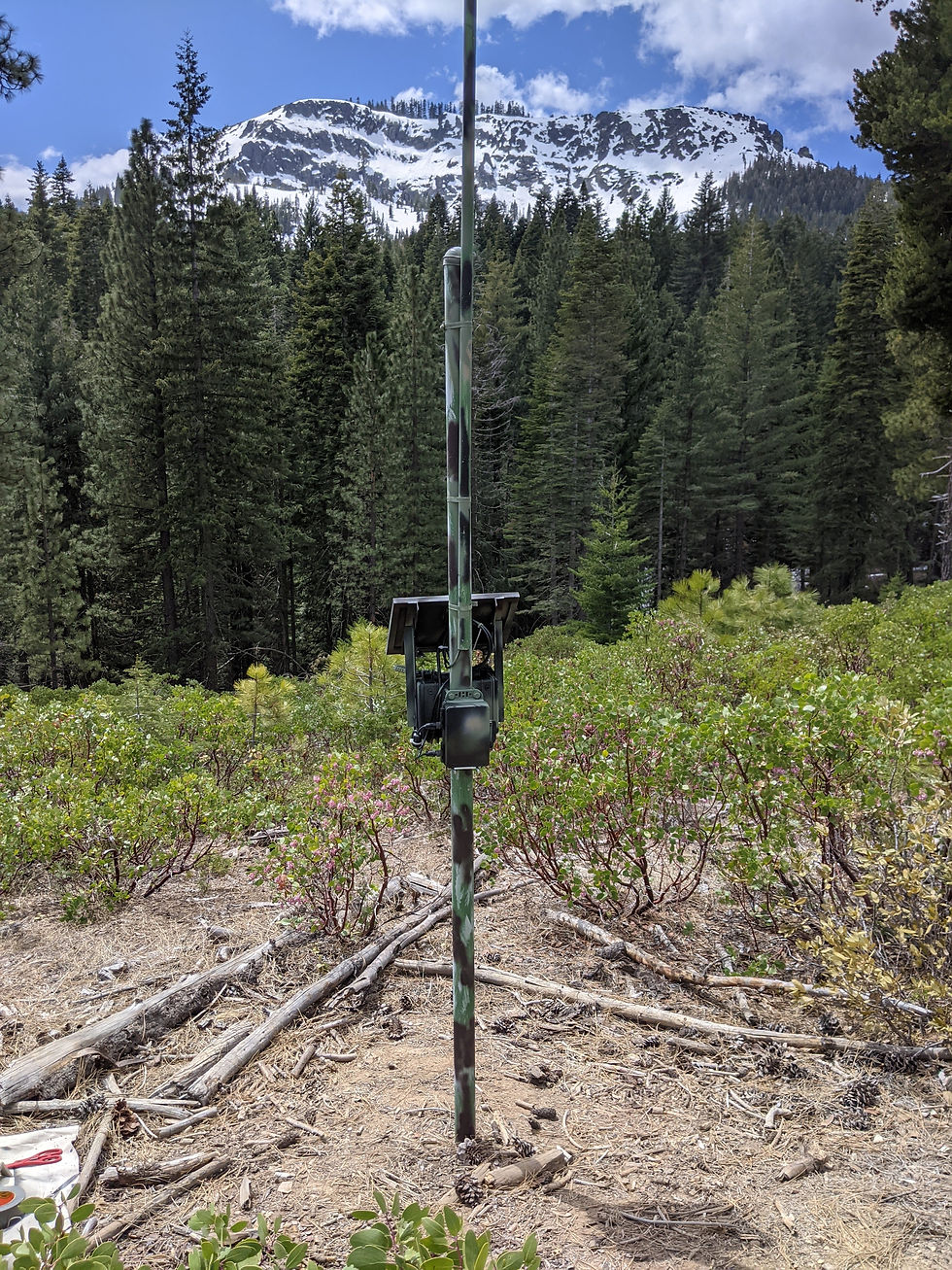CDFW WNS Project – Bat Population Monitoring using Acoustic Detectors
- Jan 10, 2022
- 1 min read
by Amelia Tauber (California Department of Fish and Wildlife)
Along with Pd and white-nose syndrome surveillance, population monitoring through emergence counts, and assisting with winter ecology studies, long-term acoustic monitoring of bat populations is a focus of the CDFW WNS Response project. In the spring on 2021 we installed eight long-term acoustic detector stations in the southern Cascades area of California, the region in which California’s first “inconclusive” detections of Pd were made in 2018-2019. The goal of this aspect of our work is to establish a baseline of bat activity before/if the disease begins to impact bat populations and to detect abnormal winter activity. Abnormal winter activity or a shift in species prevalence may be indicators of WNS impacts. Four of the detector stations are in high-priority NABat GRTS cells. Our detector stations use SM4FS-Bat detectors and SMM-U2 microphones, run on solar power, and are functional year-round.


As of summer 2021, 15 bat species have been confirmed from the detector stations. Call file processing is done using SonoBat, EchoClean (a vetting prioritization tool created by Ted Weller and Brendan Ward), and manual vetting.
This work is ongoing and will soon be expanded to other regions. We will be installing four long-term acoustic stations in the Northern Sierra and the North Coast. These will serve as comparisons to the southern Cascades stations. We are also expanding our Pd surveillance and emergence count efforts. Any assistance in finding roosts at which CDFW might survey would be much appreciated – Please report known colonies at https://wildlife.ca.gov/Conservation/Mammals/Bats/Report-Colony

link link link link link link link link link link link link link link link link link link link link link link link link link link link link link link link link link link link link link link link link link link link link link link link link link link link link link link link link link link link link link link link link link link link link link link link link link link link link link link link link link link link link link link link link link link link link link link link link link link link link link link link link link link link link link link link link link link link